Robert Rauschenberg's triumphant survey at Tate Modern, goat included
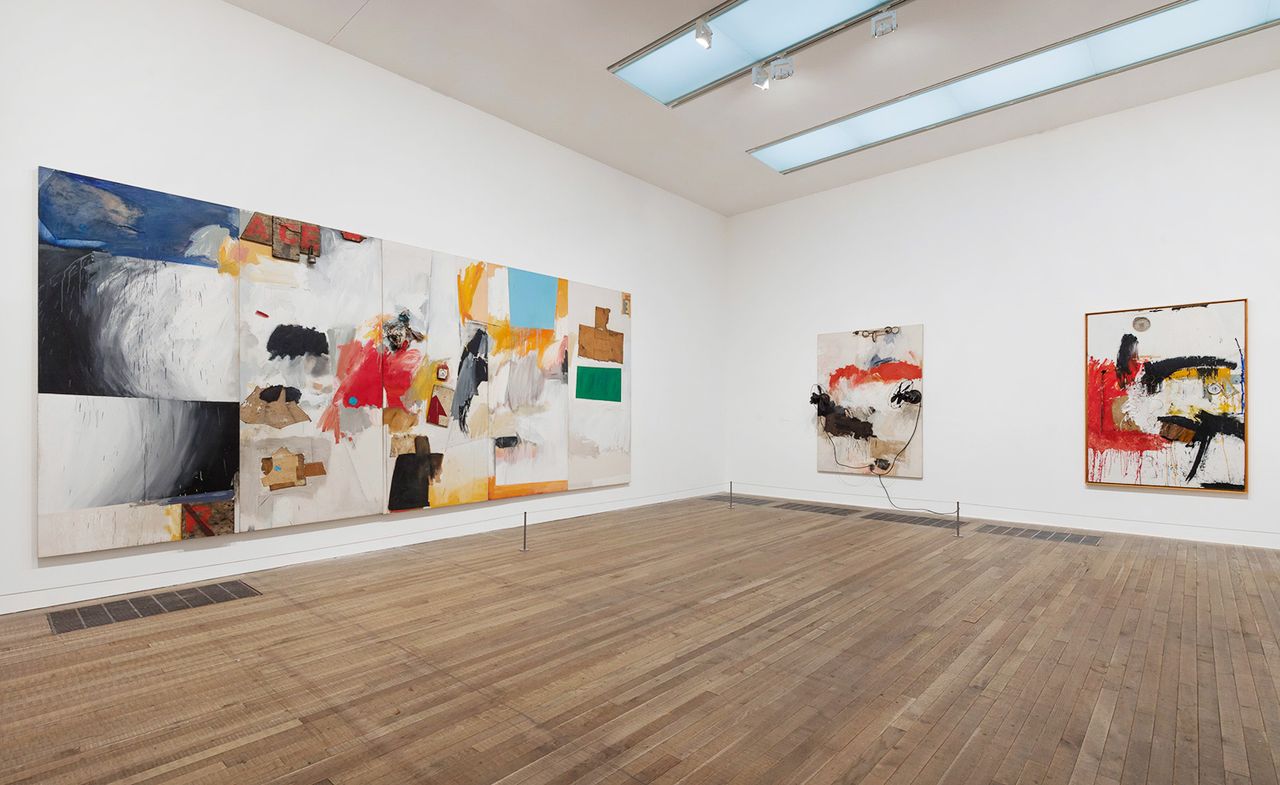
There was much art-world hype earlier in the year about Robert Rauschenberg's famously fragile Monogram goat travelling to London for the first time in two decades. It was posited as a lynchpin in Tate Modern's anticipated Rauschenberg retrospective – another UK first since the great American artist passed away in 2008.
Kneeling down next to the beast, looking into Monogram's glassy eyes, he was worth the 20-year wait. There's humorous absurdity in his vacant expression, his chin hairs matted in a rainbow seal of oil paint. But there's also something mournful. He's suspended in a ridiculous tyre belt, to be ogled by visitors. Monogram began life as a $15 stuffed animal at a used furniture store. Since then, he's had quite the life. Like many of the artist's renowned Combines, Monogram developed various appendages over a number of years. At one stage, he was mounted on a vertical canvas before being slotted inside the rubber tyre for which he's now known. As Rauschenberg said, the tyre and the goat 'lived happily ever after'.
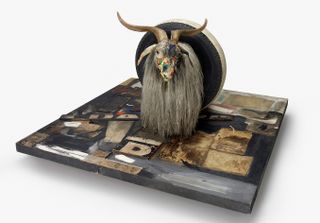
'Monogram', 1955–59. Purchased 1965 with contribution from The Friends of Moderna Museet, Moderna Museet, Stockholm. © Robert Rauschenberg Foundation, New York
A little like his Combines, Rauschenberg was continually adding appendages and arms to his practice, driven by an insatiable curiosity with materials. Each chapter of his six-decade career (including his silkscreen period, live performances, technology and material abstraction) has a dedicated room in the exhibition. This change of mediums and methods mirrors the artist's moving physical locations. He toured, holidayed and journeyed extensively – most famously to Cuba, Spain, Italy and Morocco with Cy Twombly in the 1950s. As Tate's director of exhibitions Achim Borchardt-Hume says, 'he saw the experience of art as inseparable from the experience of life'.
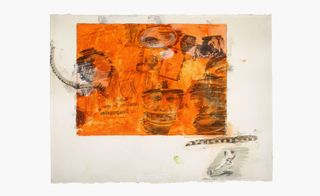
The exhibition starts with Rauschenberg's early experiments at Black Mountain College, in a room overwhelmed by monochrome. It's as if colour couldn't be introduced yet, because Rauschenberg was too preoccupied by texture. These early works have a simplicity, an air of cool and a material playfulness that lay the foundations for his future work. A renowned early collaboration with John Cage, Automobile Tyre Print (1953) hints at what's to come from Rauschenberg's performative work. Here, Rauschenberg laid page upon page of typewriter paper on a driveway, and asked Cage to run over them in his car, with ink on the wheel. As Rauschenberg said at the time, Cage was 'both the printer and the press'.
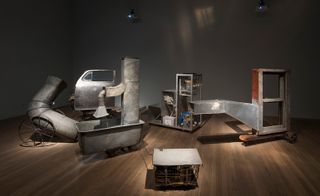
'Oracle', 1952–55.
The idea of repurposing and using objects that are already lying around (as seen in this early use of a car and typewriter paper) went on to define Rauschenberg's practice, and help redefine the landscape of American art. Rauschenberg used the objects of life: boots, paint pot lids, desk fans and, perhaps most importantly, newspaper clippings. He embedded a radio into one of his Combines, with the dials still showing, so that visitors could choose the station. In this sense, the audience – the users of these essential life objects – was as much a part of his work as the materials were.
Rauschenberg's choreographic pieces (here represented by a host of archival material, photographs, projections and film) grew in direct relation to his sculptures and paintings. Though static, his silkscreens have the same energy and life that his dances do; framed against a wall, his later fabric swathes ripple like flags when a visitor walks by too closely.
Despite the vast spectrum of the artist's work, each phase bares his distinct signature. What this exhibition does so cleverly is to simply allow this genius to unfold. Chronologically, without fuss, or unnecessary embellishment, the Tate has allowed Rauschenberg's work to speak for itself. Any art world hype is wholeheartedly justified.
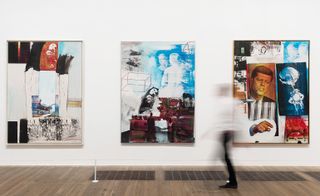
Rauschenberg's silkscreens used images found in newspapers and magazines of the 1960s.
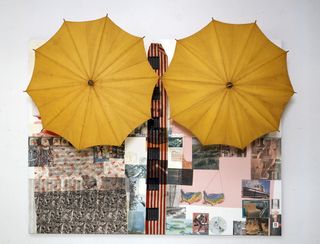
Untitled (Spread), 1983. © Robert Rauschenberg Foundation, New York
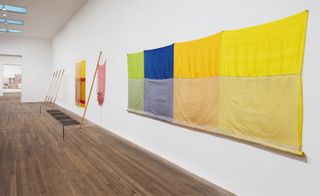
Rauschenberg later experimented with different materials, like great swathes of coloured fabric.
INFORMATION
’Robert Rauschenberg’ is on view until 2 April 2017. For more information, visit the Tate Modern website
ADDRESS
Tate Modern
Bankside
London SE1 9TG
Wallpaper* Newsletter
Receive our daily digest of inspiration, escapism and design stories from around the world direct to your inbox.
Elly Parsons is the Digital Editor of Wallpaper*, where she oversees Wallpaper.com and its social platforms. She has been with the brand since 2015 in various roles, spending time as digital writer – specialising in art, technology and contemporary culture – and as deputy digital editor. She was shortlisted for a PPA Award in 2017, has written extensively for many publications, and has contributed to three books. She is a guest lecturer in digital journalism at Goldsmiths University, London, where she also holds a masters degree in creative writing. Now, her main areas of expertise include content strategy, audience engagement, and social media.
-
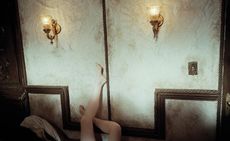 Unlike the gloriously grotesque imagery in his films, Yorgos Lanthimos’ photographs are quietly beautiful
Unlike the gloriously grotesque imagery in his films, Yorgos Lanthimos’ photographs are quietly beautifulAn exhibition at Webber Gallery in Los Angeles presents Yorgos Lanthimos’ photography
By Katie Tobin Published
-
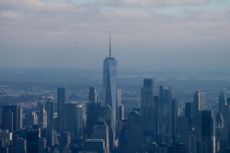 Remembering architect David M Childs (1941-2025) and his New York skyline legacy
Remembering architect David M Childs (1941-2025) and his New York skyline legacyDavid M Childs, a former chairman of architectural powerhouse SOM, has passed away. We celebrate his professional achievements
By Jonathan Bell Published
-
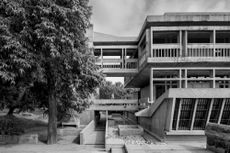 At the Institute of Indology, a humble new addition makes all the difference
At the Institute of Indology, a humble new addition makes all the differenceContinuing the late Balkrishna V Doshi’s legacy, Sangath studio design a new take on the toilet in Gujarat
By Ellie Stathaki Published
-
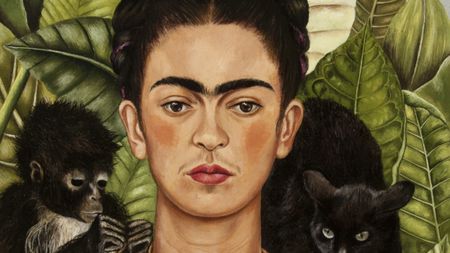 A major Frida Kahlo exhibition is coming to the Tate Modern next year
A major Frida Kahlo exhibition is coming to the Tate Modern next yearTate’s 2026 programme includes 'Frida: The Making of an Icon', which will trace the professional and personal life of countercultural figurehead Frida Kahlo
By Anna Solomon Published
-
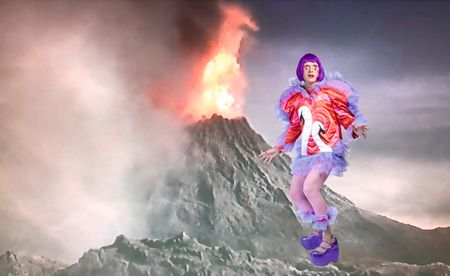 A portrait of the artist: Sotheby’s puts Grayson Perry in the spotlight
A portrait of the artist: Sotheby’s puts Grayson Perry in the spotlightFor more than a decade, photographer Richard Ansett has made Grayson Perry his muse. Now Sotheby’s is staging a selling exhibition of their work
By Hannah Silver Published
-
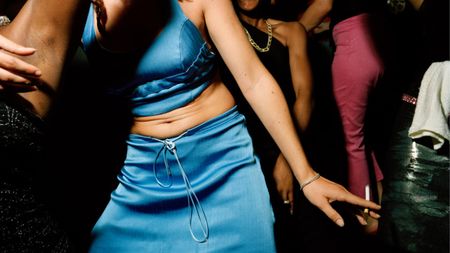 From counter-culture to Northern Soul, these photos chart an intimate history of working-class Britain
From counter-culture to Northern Soul, these photos chart an intimate history of working-class Britain‘After the End of History: British Working Class Photography 1989 – 2024’ is at Edinburgh gallery Stills
By Tianna Williams Published
-
 Celia Paul's colony of ghostly apparitions haunts Victoria Miro
Celia Paul's colony of ghostly apparitions haunts Victoria MiroEerie and elegiac new London exhibition ‘Celia Paul: Colony of Ghosts’ is on show at Victoria Miro until 17 April
By Hannah Hutchings-Georgiou Published
-
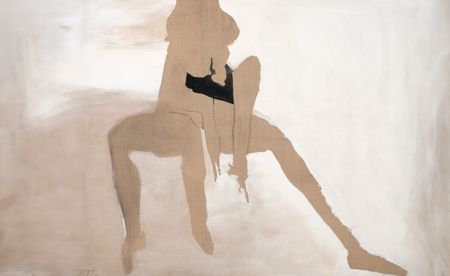 Teresa Pągowska's dreamy interpretations of the female form are in London for the first time
Teresa Pągowska's dreamy interpretations of the female form are in London for the first time‘Shadow Self’ in Thaddaeus Ropac’s 18th-century townhouse gallery in London, presents the first UK solo exhibition of Pągowska’s work
By Sofia Hallström Published
-
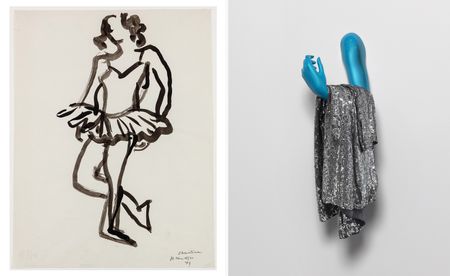 Sylvie Fleury's work in dialogue with Matisse makes for a provocative exploration of the female form
Sylvie Fleury's work in dialogue with Matisse makes for a provocative exploration of the female form'Drawing on Matisse, An Exhibition by Sylvie Fleury’ is on show until 2 May at Luxembourg + Co
By Hannah Silver Published
-
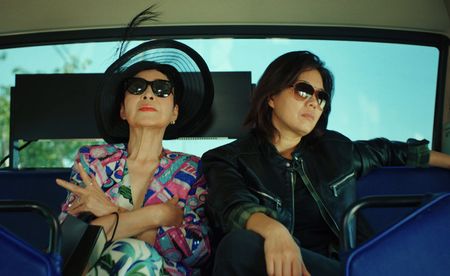 What to see at BFI Flare film festival, 'a rich tapestry of queer experience'
What to see at BFI Flare film festival, 'a rich tapestry of queer experience'As one of the only film festivals to explicitly profile LGBTQI+ cinema, BFI Flare Film Festival remains a unique and beloved event. Here's what to see as it makes its return to London from 19 - 30 March
By Billie Walker Published
-
 The enduring appeal of Transport for London’s seat designs
The enduring appeal of Transport for London’s seat designsFrom artist Rita Keegan’s new collage to fashion designer Adam Jones’ Overground suit, TfL moquettes continue to enjoy a cult status
By Kyle MacNeill Published